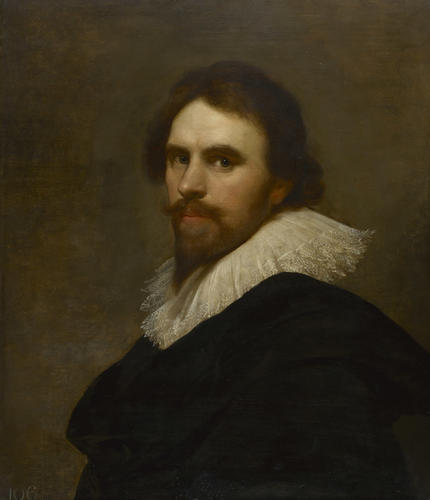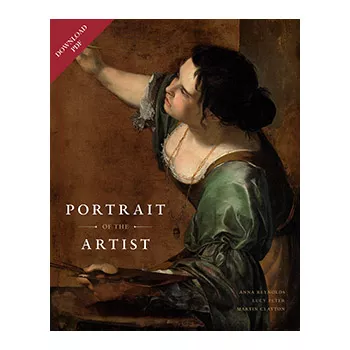A Self-Portrait c. 1630
Oil on oak panel | 68.3 x 58.9 cm (support, canvas/panel/stretcher external) | RCIN 404431
-
Daniel Mytens was born in Delft but probably trained in The Hague. By 1618 he was in England and in 1621 had completed his first royal commission: a portrait of James I (National Portrait Gallery, London). On 19 July 1624 he was granted both a one-off payment of £25 and an annual pension, for life, of £50 from the Crown ‘in consideracon of the good service donne unto us’. Following James’s death, his son Charles I appointed the Dutch artist ‘one of our picture-drawers of our Chamber in ordinarie’ for life. However, in 1632 Mytens suffered a major professional setback with the arrival in England of the internationally recognised Anthony van Dyck. The highly ambitious Van Dyck quickly demonstrated his ability to strike the perfect balance between flattery and likeness and displaced Mytens as the preferred royal portraitist. Mytens subsequently returned to The Hague several years later, where he continued to receive his royal pension but worked primarily as an art agent rather than a painter. Today he is highly regarded for his portraits of Charles I, which offer a truer account of the king’s weaknesses than Van Dyck’s somewhat rose-tinted likenesses.
This self-portrait was probably painted for Charles I in about 1630; the king’s ‘cr’ brand appears on the back of the panel. According to Van der Doort’s inventory dating from the late 1630s, it was placed, ‘above the doore in the litle roome Betwene Withdrawing roome … and the longe gallorie’ at the palace of Whitehall near to self-portraits by both Rubens (RCIN 400156) and Van Dyck. Mytens’s physical placement beside these two powerhouses of Flemish painting is more than justified by this subtle, composed self-portrait. The artist presents himself dressed in plain, black clothing with a fine lace-edged falling ruff. Like most self-portraits produced in England at this time, Mytens makes no visual reference to his profession, instead depicting himself as the ideal courtier, a man of grace, style and intellect. The artist’s impeccable Netherlandish draughtsmanship and clear understanding of colour are particularly evident in the creamy flesh tones and tiny feather-like brush strokes that make up his beard and animate his features.
Text adapted from Portrait of the Artist, London, 2016Provenance
Presumably painted for Charles I; recorded over the door in the Little Room between the Breakfast Room and Long Gallery at Whitehall in 1639 (no 5); sold for £6 to Hunt and Bass on 1 March 1653 from St James's (no 129); recovered at the Restoration and listed in the Passage between the Green Room at Closet at Whitrehall in 1666 (no 269)
-
Creator(s)
-
Medium and techniques
Oil on oak panel
Measurements
68.3 x 58.9 cm (support, canvas/panel/stretcher external)
86.9 x 77.5 x 4.4 cm (frame, external)
Category
Object type(s)
Other number(s)
Alternative title(s)
Self-Portrait
Portrait of the Artist
Daniel Mytens (ca 1590-1647)
Portrait of a Dutch gentleman, previously identified as












